AR (Augmented Reality) is like an invisible hand that brings the internet and real life together. As this technology advances, mobile phones are beginning to support AR. In September last year, Lenovo launched its first phone with Tango AR technology, the Lenovo PHAB 2.
The Lenovo PHAB2 Pro is the world’s first consumer device to feature Google Tango technology, jointly developed by Lenovo, Google, and Qualcomm. The device features an array of sensors and three rear cameras, enabling it to transform real-world scenes into virtual space and allow users to interact with virtual elements in the real world.
Teardown is what we do! Follow us on Facebook for the latest repair news.
The first step is to use a screwdriver to remove the two screws beside the USB Type-C port.
Because the PHAB 2 Pro has a larger body, its screws are much thicker than those on general phones.
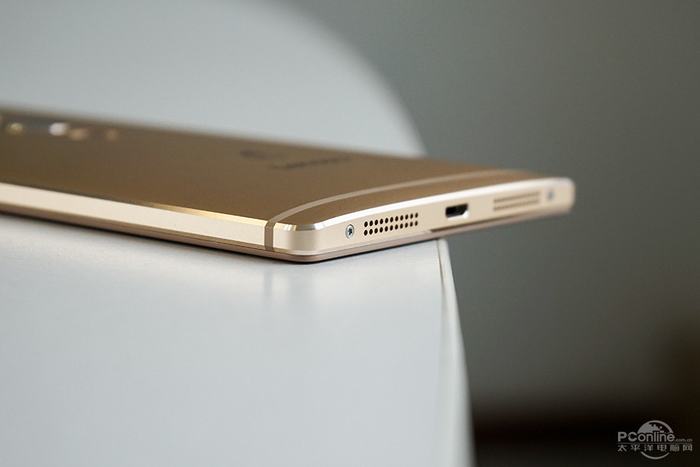
After opening the back cover, you can see a fingerprint module connected to the motherboard.

After removing the back cover, you can access the massive battery and motherboard. The phone also features a classic three-stage design: the top is the motherboard, the middle is the battery, and the bottom is the sub-board and speaker module.

The PHAB 2 Pro features three rear cameras, including a 16-megapixel camera for capturing images and videos, two depth-sensing cameras, and a motion-tracking camera for augmented reality motion recognition.
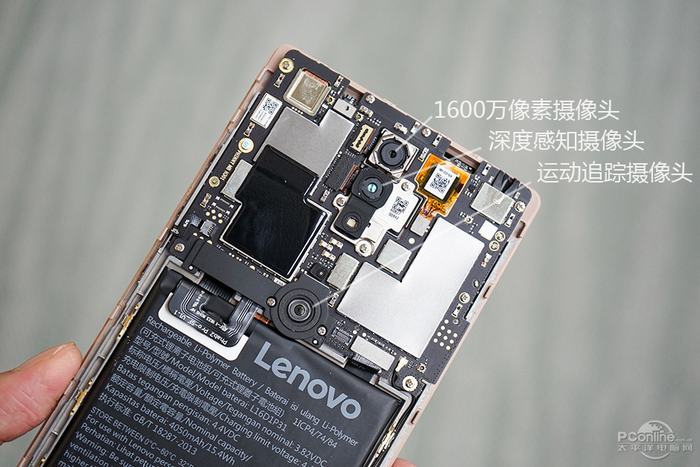
The back cover has four holes, in addition to the three cameras, and the flash also has a hole.
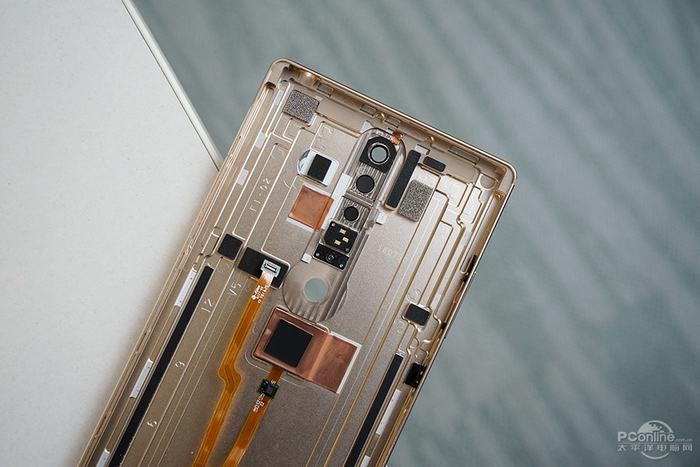
Remove the three screws securing the plastic bracket.
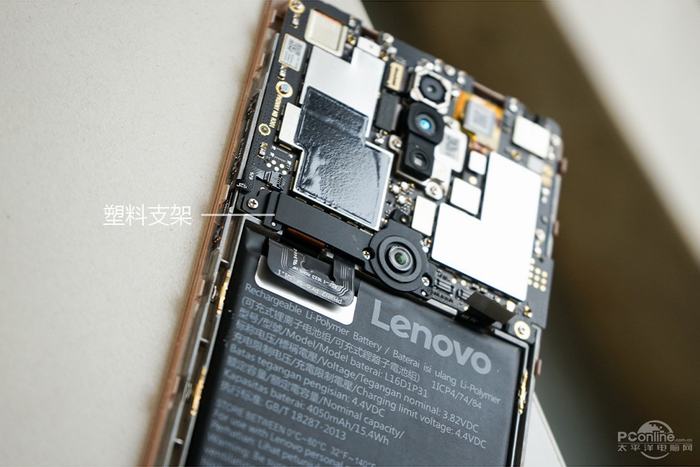
The motion tracking camera is secured with a plastic bracket, which also secures the battery cable and the main FPC.
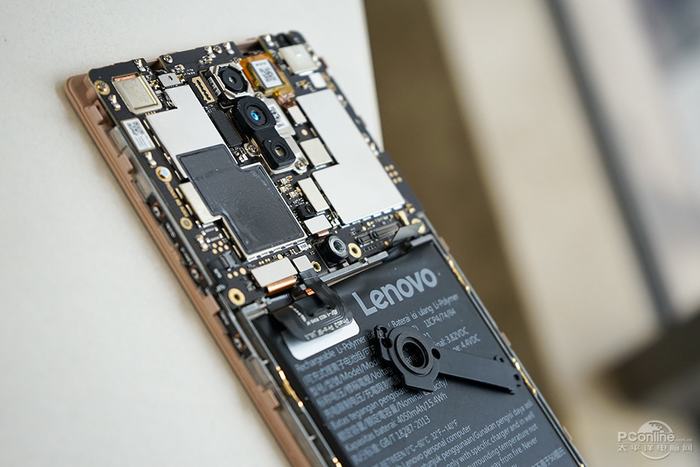
The depth-sensing camera surface is covered with a rubber ring to fill the space between the camera and the back cover.

Remove the three screws securing the camera bracket.
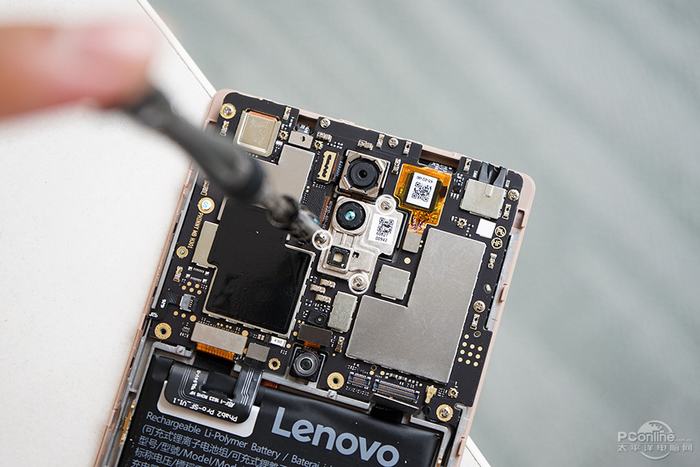
We can see that the depth-sensing camera and flash are secured together via a metal bracket.
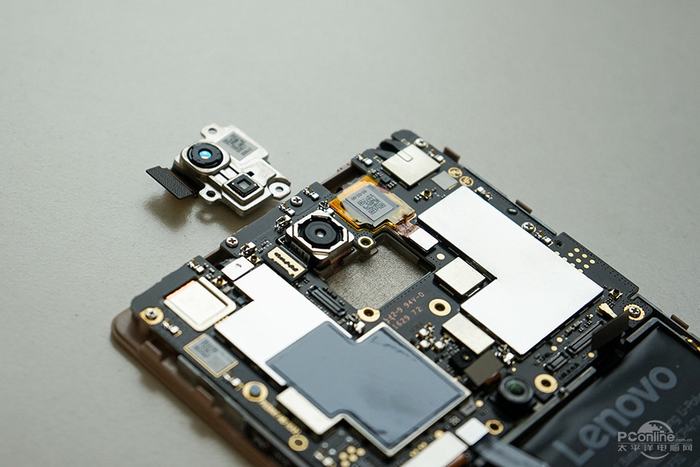
After removing the motherboard, we can see that the metal frame has a copper pipe built into it, which is covered with thermal grease. This copper pipe transfers heat from the chip to the entire metal frame.
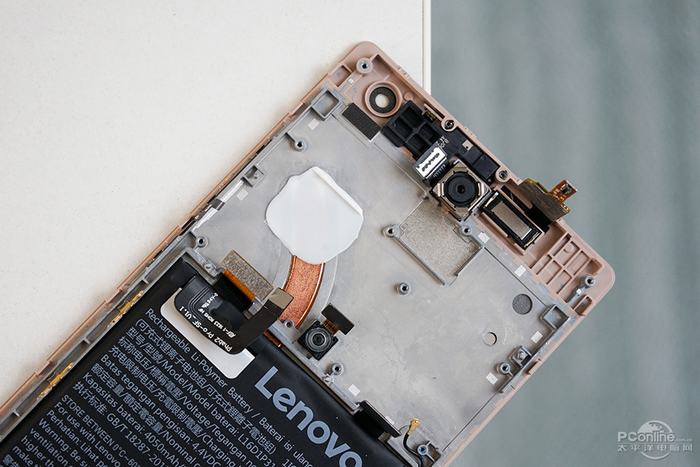
There is a groove on the metal frame for securing the camera in position. This groove and screw design is quite sturdy.
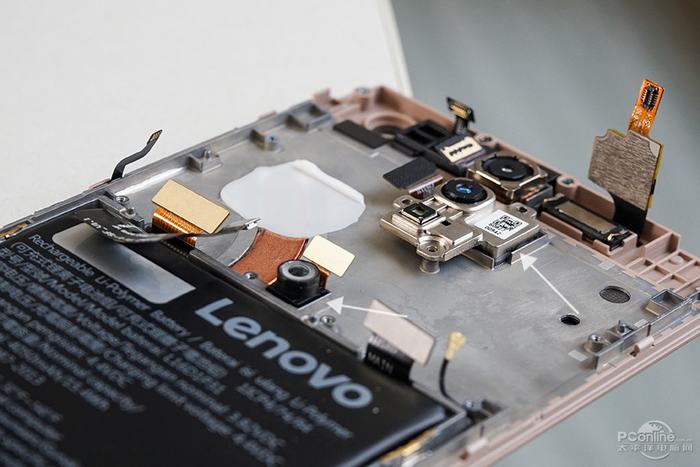
The light distance sensor and noise reduction microphone module are integrated into a module. The right side is a 16 MP camera. Then, the right is the handset.

Remove the loudspeaker module. Under the loudspeaker is a sub-board.
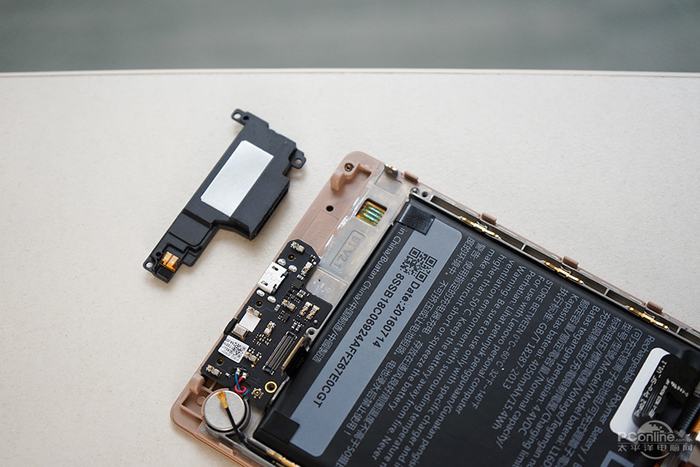
The sub-board integrates a micro-USB port, a vibration motor, and a microphone.
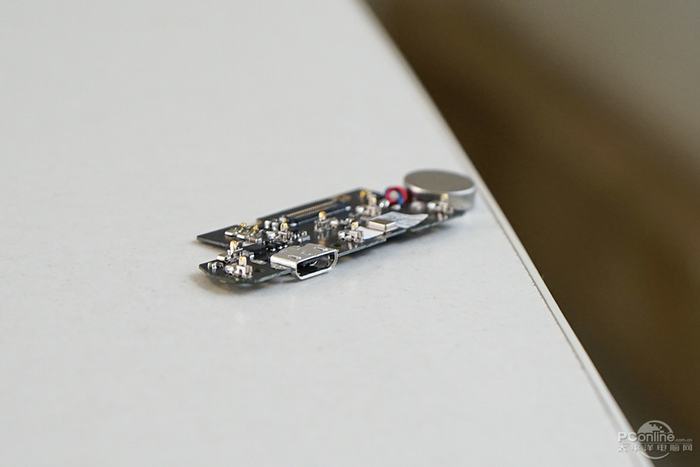
The PHAB 2 Pro features a Qualcomm Snapdragon 652 processor, 4GB of RAM, and 64GB of internal storage. The chip and metal shield are also filled with thermal grease.
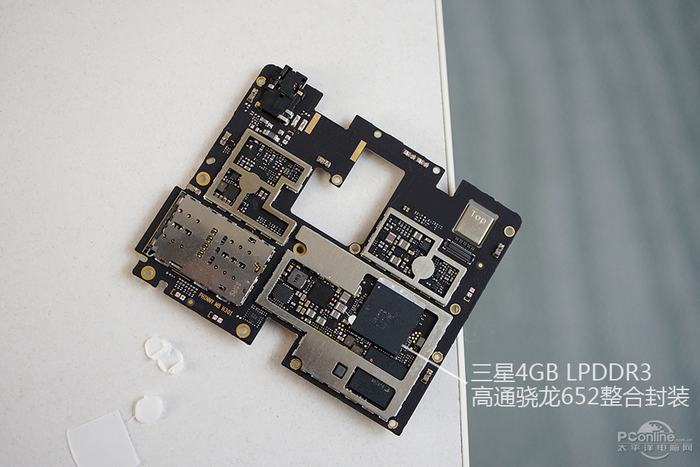
The built-in 4050 mAh battery supports fast charging.
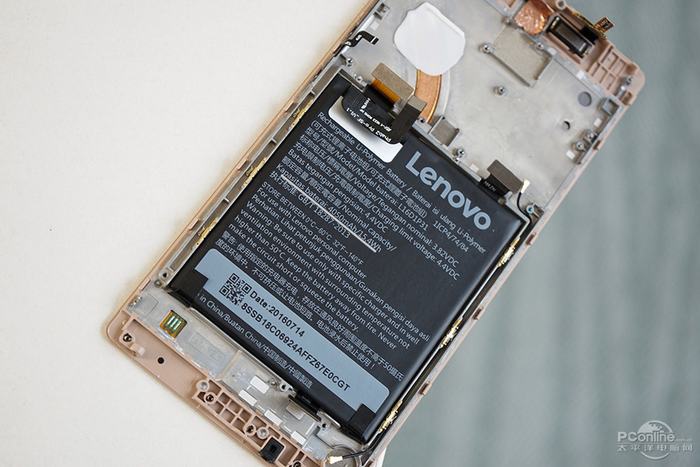
Overall, the Lenovo PHAB2 Pro is not difficult to disassemble, likely due to its larger size and the looser layout of its internal components, which makes repairs easier.
The three rear camera modules of the PHAB2 Pro are mounted on the motherboard using a special structure. To ensure long-term high-frequency operation of the processor, its internal heat pipe design allows the chip’s heat to dissipate to the metal frame.
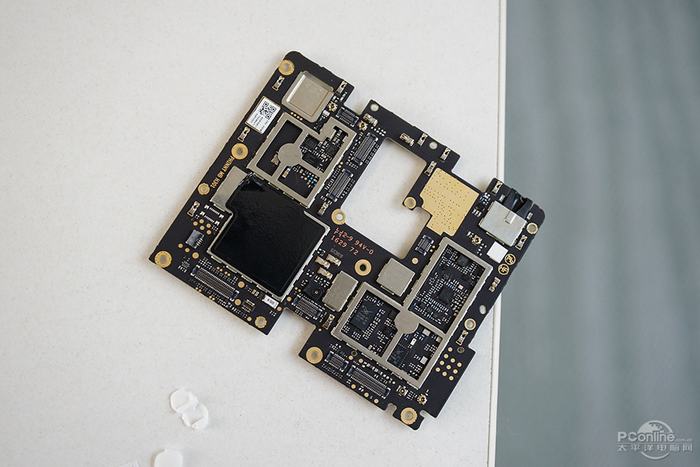
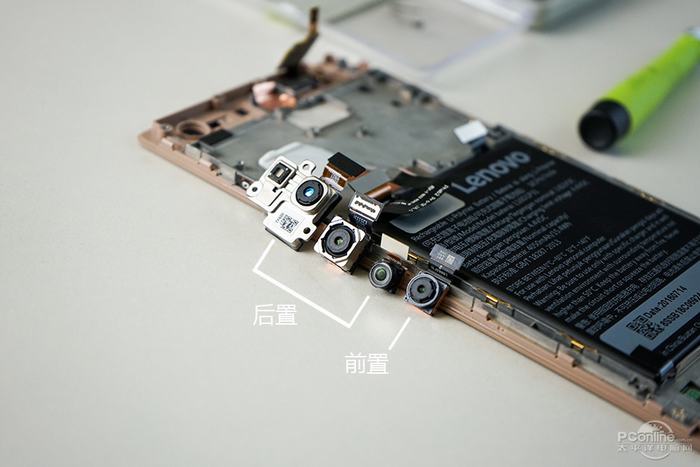

This is a really great teardown.
Is there any chance you could tell me where the antennas are or the connectors for the antennas?
It’s next to the battery connector. Please see picture 4.
I’m looking for a rear camera for my Lenovo Phab2 Pro (690M). My current lens is no longer focusing. I removed the camera and found that the lens was fixed. No focus or zoom is possible. Maybe you know where I got such a new camera? I would be very happy to receive an answer. Greetings, Matti.
Currently, there is no third-party spare rear camera for this mobile phone on the Internet. I suggest you contact Lenovo to get this camera.
Did you find it?
लेनोवो के 2 टेबलेट का मॉडल नंबर 690 मदरबोर्ड होगा